We are bombarded by information about the importance of culture in the workplace. After decades of productivity and profit being the only metrics of business success, it is about time that we add some variety to our KPIs. Over the past few years however, we haven’t been able to escape the barrage of articles, books, and white papers about “creating a great company culture.” Personally and professionally, I think it is great that we are paying so much attention to this issue. We are decades overdue. Too many companies and organizations are still neglecting their employees and overlooking their responsibilities to be good stewards.
But are we looking at company culture in the right ways? Is our focus in the right place?
In the New York Times article, Inside Amazon: Wrestling Big Ideas in a Bruising Workplace, there is a lot of effort spent talking about how top-down philosophies, principles, and practices shape the daily lives of workers. In fact, in my review of numerous articles of this sort, the vast majority of them focus on the policies and procedures of organizations, calling these things, and their results, the “workplace culture.”
Those things are a part of the culture of a workplace, without a doubt. One could argue that such mechanisms are responsible for shaping the geography within which culture is created, in fact. But maybe we are neglecting an even more important part of any organization’s cultural identity–that created organically by the employees.
I’m not suggesting that we ignore the top-down policies, rules, regulations and philosophies that impact lives and livelihoods. I am suggesting that we consider both forms of culture, and be intentional about specifying the importance of each when talking about this topic.
Robot Overlords
Much like replacing a company’s employees with robots can control variances in productivity, so too does top-down workplace culture instill a degree of homogeneity across a company.
Top-down workplace culture is that dictated by policies and procedures that create organization-wide expectations. These cultural elements are handed down from above and have dramatic effects on the daily lives of employees and their families. They set hours of operation, dress codes, vacation policies, benefits, company retreats, holiday parties and other homogenous structures. They help the company run efficiently and effectively, like a machine, and are often pivotal in attracting talent. These cultural elements are most often mandatory and highly governed, managed or monitored.
At their best they can help create equity and fairness. At their worst they can deny variety, stifle creativity, and reduce diversity.
But these dictated norms and values only tell half the story. They are roughly analogous to a state’s legal code, giving rules and regulations for behavior, but doing little in the way of defining what it means to live in that state. They tell a person what they should and should not do, but they do not tell a person whom they should or should not be. They do not create a person’s identity, just as rules do not alone create a company’s culture.
The Petri Dish
In the same way that a diverse ecosystem encourages the growth and proliferation of the strongest species, so too does a bottom-up approach to building culture allow the best ideas, practices, and norms to thrive.
Bottom-up workplace cultures take the forms of eccentricities and peculiarities brought about by interactions among employees. These cultural elements spring up slowly over time, as individuals and small groups discover similarly held beliefs, passions, and interests, then begin sharing them. Examples of these cultural elements might include game nights, yoga mornings, or intramural sports. These forms of culture are optional and unregulated, yet they can be a major factor in the sustaining of healthy employee relationships and retention of loyal and productive team members. They allow each employee to invest in the organization and define it, to some extent.
These bottom-up and side-by-side forms of culture are really what create the identity of a workplace, at least from the point of view of the employees. It is these employee-spawned and led institutions that generate the lore of the company, and that manifest the stories that employees take into the world with them.
Creating and Supporting Healthy Workplace Cultures
Top-down company culture helps create the baseline for what a company expects of its employees and helps give individuals a set of guidelines for participation. No organization can succeed without rules, just as no society can survive without laws. There is no lack of inspiration and guidance for how to best design and implement a “healthy” culture, from the top-down perspective. I think of Google, Zappos, and other such companies as guideposts in this ever-changing landscape.
The part of a healthy culture that is a bit harder to understand, and to find inspiration for, is the bottom-up side. By its very nature, it will be different in every company. Its essence will spring from the interests and passions of individuals and small groups, and thusly it is diffuse. But there is a handful of tactics that companies can and should employ to help spark, sustain and grow an organic culture.
Create Space
This is an area where top-down, compulsory cultural aspects can have a huge impact on employee-generated, casual culture. Leaders can use policies to create openness and flexibility within which individuals and groups can feel empowered to share themselves and their interests. Allow for and promote unstructured time in which individuals and groups can share their passions and interests with one another.
Invite teams to make their marks on what is their organization too!
Make the Rounds
All too often, even in the smallest of companies, leaders feel removed from bottom-up cultural elements. Even when an executive team has made an effort to promote organic culture, they often fail to participate in it. “There isn’t time,” or “That’s their thing,” are the thoughts that lead to a wider-than-necessary gap between the organic culture created by the employees and that experienced by leadership.
Leaders, both mid and upper-level, need to make the rounds and participate in the organic culture that is changing the personality of their organizations. It shows that loyalty and commitment flow across the company, not just upward.
Tell Stories
It is easy to forget to celebrate. It is easy to think that culture is what is written in stone and followed to the letter. It is difficult to make time for the transference of company lore. Like the tribes and villages of centuries past, companies need to support and grow their culture by telling the stories that help create it. Leaders should invite teams and individuals to share their bottom-up cultural experiences with the company as a whole. Leaders should observe the events and experiences that are shaping the company and then tell the tales themselves, cementing the importance of the bottom-up by delivering it from the progenitors of the top-down.
Love your robot overlords AND cultivate a healthy cultural petri dish.
The Workplace “Cyborg”
In many ways a healthy company resembles a cybernetic organism–the perfect amalgamation of mechanical and organic elements, forming an entity that is not solely either, but the best parts of both. The mechanical elements of a cyborg (and an organization) provide structure and durability. They help sustain the creature through change and chaos. The organic elements provide a spark of the unexpected and allow for adaptability within and around the mechanical structures.
Bottom-up, organic workplace culture is the art that provides context to the science of top-down, mechanical workplace culture. The newest generation of company leaders knows that only by seamlessly blending the organic and mechanical elements of their cultures can they compete for top talent, spark the highest levels of creativity, and strengthen the commitment and loyalty of their employees.
Most of the literature and thought on the topic of workplace culture circles around the thoroughly explored mechanical, top-down elements. Isn’t it time we spend equal effort exploring the bottom-up, organic? As leaders, we have a lot to learn about how to create an environment that generates, supports and celebrates organic workplace culture, and provides the context that gives the mechanical some meaning and purpose.







